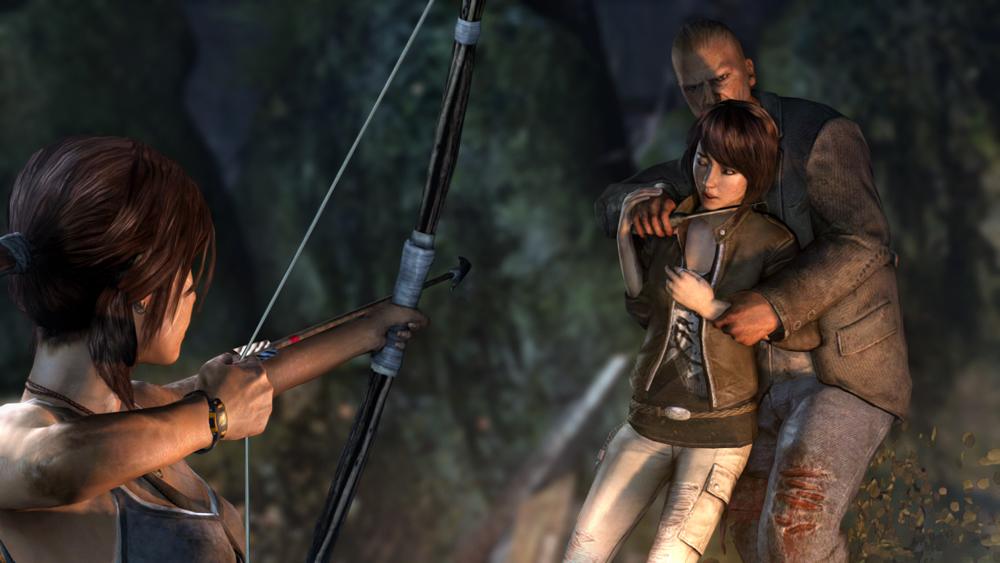When it was first launched in October of 1996, the original “Tomb Raider” quickly became one of the best reviewed and bestselling titles on the fledgling PlayStation. It was a case of being in the right place at the right time.
At the time, “Tomb Raider” was unique. It was one of the pioneers of the third-person action game genre and acted as the springboard that launched a multimedia empire including movies, music soundtracks, book (comic or otherwise), and even thrill rides in several Paramount Pictures theme parks.
Unfortunately, the “Raider” train seemed to derail with the release of “Tomb Raider: Angel of Darkness” in 2003. While the game sold over 2 million copies, critical backlash was harsh and the franchise was then stripped from original developers, Core Design, by publisher Eidos and handed off to Crystal Dynamics to act as the keepers of the franchise.
Flash-forward to 2013. After getting a number of critically and financially successful games underneath their belt, Crystal Dynamics has rebooted the franchise with their newest game, simply dubbed “Tomb Raider.”
“Tomb Raider” frames itself as a new origin story for series star Lara Croft. Instead of putting you in the shoes of a certified, tried and true adventurer as in the series’ previous installments, this Lara is still cutting her teeth.
A 20-something Lara is shipwrecked on the island of Yamatai with the rest of the research crew aboard their ship, The Endurance. She quickly learns that the native population, made up of other victims that have been stranded on the mysterious island over the years, is not very friendly and she quickly finds herself fighting for her survival. Maybe a bit too quickly.
It seems Crystal Dynamics wanted to tell a story of Lara slowly coming into her own as a badass who would make even Indiana Jones tip his cap, but the problem is that the transformation from victim to deadly vixen seems to happen with the flip of a switch instead of the gradual movement of a slider.
One moment you have Lara distressed at killing a man who was trying to sexually assault her; the next segment of the game that follows then has you shooting dozens of people on her way to safety.
This harkens back a bit to Nathan Drake in the “Uncharted” series: Drake is portrayed as this lovable rogue who also happens to kill dozens of people every time he saunters out the door. In most cases, this transformation is jarring.
Fortunately for “Tomb Raider,” the uncanny valley wears off fairly quickly. What seems like an initial misstep in character progression quickly falls away as Lara is thrown into more dire and disturbing situations. By the end of the game, a noticeably more confident and deadly Lara doesn’t seem out of place after all she has survived.
To Crystal Dynamic’s credit, Lara’s skills and combat abilities have a much smoother progression than their storytelling counterparts.
At the beginning of the game Lara’s first weapon is simply a bow and a handful of arrows. As you progress, you gain more tools to traverse her environment and with them, an increasing degree of lethality to contend with foes hell bent on making sure you never leave Yamatai.
The combat is pretty typical for third person action fare, but upgrades to your weaponry make the combat more interesting as more tactical options become available. The natives tend to take cover as soon as they notice you, so sometimes combat devolves into a game of whack-a-mole as you wait for one of them to pop a head out. Once explosive arrows are introduced this no longer becomes a problem. Are they hiding behind cover? Just blow it up.
And boy, those explosives will look pretty because the team at Crystal Dynamics used every trick in the book to pull the horsepower needed for the caliber of visuals. The game runs at a smooth 30 frames a second even with the flickering shadows dancing on cave walls or rays of sunshine peeking through trees.
Some vistas on the island are absolutely stunning and the visuals are probably the most impressive achievement in the for the team at Crystal D, especially considering the age of the hardware for the Xbox 360 and PlayStation 3. Playing on PC gives the expected bump in visual fidelity.
While the story fails to capture the same sense of mystery and humanity that “Lost” so desperately tried to wrangle a few years ago, the moment to moment action and exploration and visuals are enough to make up any ground the script may have lost.
As “Tomb Raider” draws to a close, you will very much want to continue your adventures with this Lara. If the quality of this reboot is any indication, Crystal Dynamics is more than capable of creating a sequel worth playing in the future.








































































